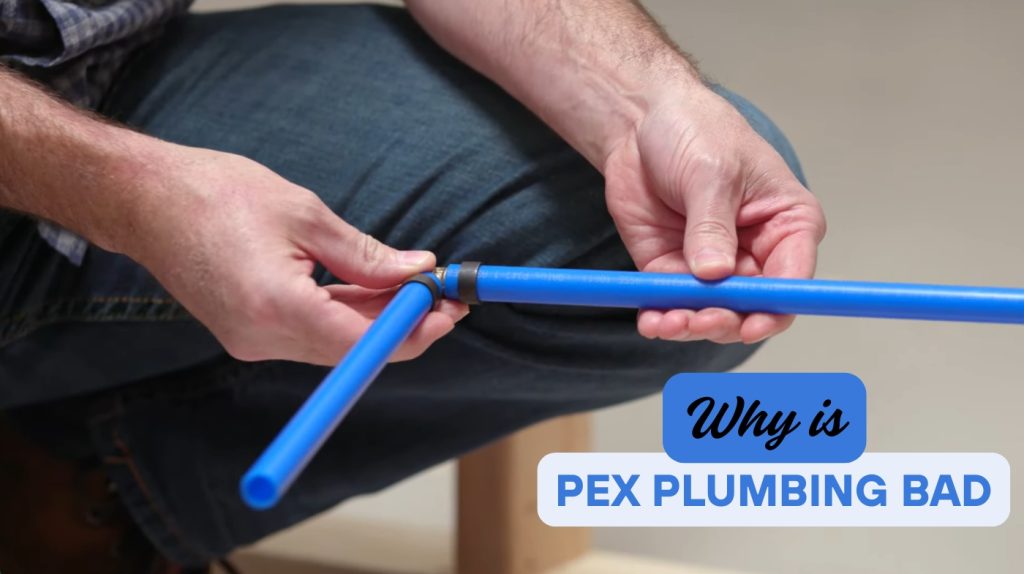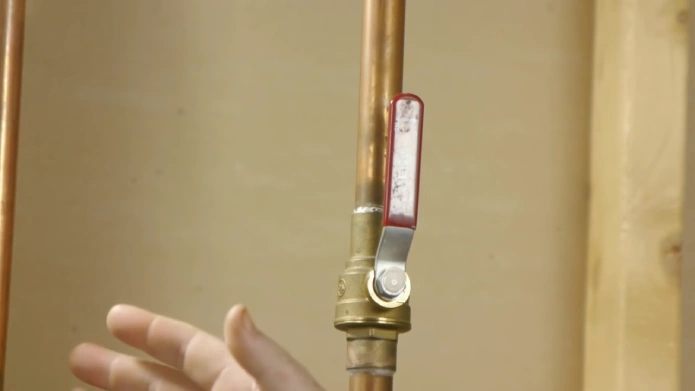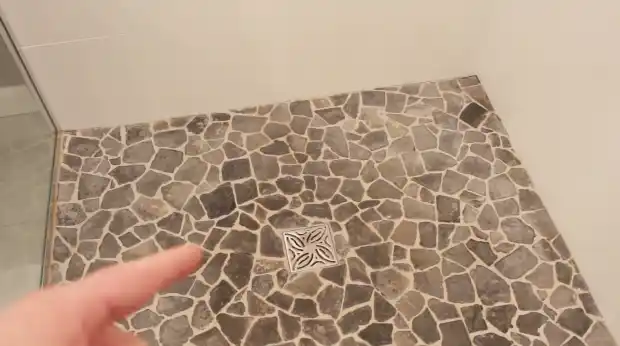Last Updated on April 3, 2025
PEX plumbing isn’t without significant downsides. It can leach chemicals like BPA into your water, affecting both taste and safety. Disposal is another concern, as PEX isn’t recyclable, leading to environmental issues.
Additionally, rodents are attracted to its plastic composition, making your system vulnerable to damaging leaks. Proper installation is essential to mitigate these risks.
If you’re keen on understanding these challenges better, you’ll find there’s more to reflect upon.
Key Takeaways
- PEX pipes can leach harmful chemicals like BPA into the water supply, affecting taste and safety.
- They are made from non-renewable resources and are non-recyclable, leading to environmental disposal issues.
- Rodents are attracted to PEX plumbing, which can lead to significant damage from chewed pipes and water leaks.
- Improper installation can result in leaks and system failures due to kinking or incompatible fittings.
- PEX pipes are vulnerable to temperature fluctuations and chlorine exposure, increasing the risk of chemical leaching.
Installation Nightmares: Chemical and Water Quality Concerns
When considering PEX plumbing, it’s vital to recognize the potential for chemical leaching into your water supply, especially since this can vary greatly between different brands and batches.
Chemicals like BPA and other toxins can leach from PEX pipes, greatly impacting your water quality by altering its taste and smell. Research shows over 150 contaminants can be present in water from PEX, particularly when pipes are new; leaching typically improves after flushing.
PEX pipes can leach harmful chemicals like BPA, affecting water quality and taste, especially when new. The cross-linked polyethylene material contains antioxidants that degrade over time, exacerbating chemical release.
Temperature fluctuations and chlorine exposure further increase leaching risks. Ultimately, understanding these factors is important for ensuring safe drinking water and mitigating health risks associated with long-term exposure to contaminants.
Additionally, new PEX pipes require flushing to reduce initial contaminants and off-gassing, which can lead to bacterial growth and unpleasant odors.
Environmental Impact and Disposal Issues
Although PEX plumbing offers several advantages, it also raises significant environmental concerns, particularly regarding its production and disposal.
PEX pipes, made from cross-linked polyethylene, rely on non-renewable resources, contributing to greenhouse gas emissions during manufacturing. While it boasts a lower carbon footprint than copper, its non-recyclability presents disposal challenges.
In fact, PEX manufacturers recycle a significant amount of scrap material, with some recycling 99% of waste, yet the material itself remains problematic at its end-of-life. In addition, although PEX systems reduce energy consumption in use, the long-term disposal issues overshadow these benefits.
To mitigate these environmental impacts, developing effective recycling strategies for PEX is essential, ensuring more sustainable plumbing solutions in the future.
Installation Complications and Risks
Proper installation of PEX plumbing is essential to guarantee system longevity and efficiency, as overlooking specific requirements can lead to significant complications and risks.
You must consider several factors during installation to avoid these pitfalls:
- PEX pipes expand and contract with temperature changes, requiring proper supports to prevent kinking. Leaking fittings can occur if the pipes are not installed correctly or if fittings are damaged, leading to costly repairs and water damage.
- Using incompatible fittings can result in leaks and system failure.
- Exposure to chlorine and UV light necessitates special handling and protective measures.
Neglecting these aspects increases the likelihood of installation errors, such as over-tightening fittings or inadequate support, which can cause sagging or cracking.
Regular inspections and adherence to specific installation guidelines are vital to maintaining a reliable PEX plumbing system.
Durability Compared to Other Materials
While PEX plumbing offers impressive durability, comparing its lifespan and resilience against other materials like copper and PVC is vital.
PEX typically lasts 40 to 50 years, while copper can extend from 50 to 100 years, though it’s more susceptible to corrosion. PEX’s resistance to corrosion and scaling gives it an edge in durability.
Additionally, the quality of materials used in plumbing systems plays a significant role in determining their overall lifespan. When compared to PVC, which lasts only 25 to 40 years, PEX proves superior with its flexibility and resistance to cracking under temperature extremes.
Furthermore, PEX requires fewer fittings, reducing potential leak points. However, environmental factors, such as temperature fluctuations and hard water conditions, can impact PEX’s lifespan, making installation quality critical for best performance.
Moreover, its average lifespan can be influenced by factors such as installation quality and water quality.
Rodent Vulnerability and Damage Potential
Rodents pose a significant threat to PEX plumbing systems, particularly due to their relentless gnawing behavior and ability to access homes through small entry points.
The plastic composition of PEX makes it especially attractive to these pests, leading to potential damage that can escalate quickly.
- Rats and squirrels can easily access attics, where PEX is often installed.
- Mice and rats regularly chew through pipes, risking significant water leaks.
- Damage can result in costly repairs and health hazards from mold and contamination.
Being aware of these vulnerabilities and taking proactive measures, like sealing entry points and maintaining yard cleanliness, is essential to protecting your plumbing system from rodent damage.
Additionally, rodent infestations pose serious structural risks, highlighting the importance of monitoring for signs of activity to prevent extensive damage.
Frequently Asked Questions
Can PEX Pipes Be Used for Outdoor Plumbing Applications?
Yes, PEX pipes can be used for outdoor plumbing applications, but you need to be cautious. They’re sensitive to UV exposure, which can cause degradation, so make certain they’re shaded or covered.
Additionally, in freezing temperatures, proper insulation is essential to prevent bursting. While PEX offers flexibility and ease of installation, you must also consider potential chemical exposure from surrounding elements.
Taking these precautions will help maintain the integrity and longevity of your outdoor plumbing system.
Are There Specific Brands of PEX That Are More Reliable?
Yes, some PEX brands are more reliable than others. You should consider brands like Uponor and Rehau, known for their high-quality PEX-A materials.
Viega also offers innovative solutions, while Nibco specializes in PEX-C tubing. When selecting a brand, focus on durability, reputation, and adherence to industry standards.
Always check product certifications to guarantee you’re choosing a reliable option that meets performance and safety requirements for your plumbing needs.
How Do I Identify PEX Types A, B, and C?
Identifying PEX types A, B, and C is like deciphering a puzzle. You can start by checking the pipe’s labeling; it will indicate the type.
For flexibility, PEX-A is the most flexible, while PEX-C is the stiffest. Conduct a shape memory test: PEX-A retains its shape best.
Consider the fitting styles, too—PEX-A uses expansion fittings, while PEX-B employs crimp rings. Finally, color alone won’t reliably distinguish them.
What Maintenance Is Required for PEX Plumbing Systems?
To maintain your PEX plumbing system, conduct annual inspections for leaks and damage. Flush sediment every three years and disinfect with chlorination every five years.
Inspect buried pipes during renovations, planning for repiping every 20 to 50 years. Regularly check fittings for wear, perform pressure tests for hidden leaks, and protect against freezing and UV damage.
Following manufacturer guidelines and using mild cleaning methods will help extend the lifespan of your system.
Can PEX Be Used for Both Hot and Cold Water Lines?
Yes, you can use PEX for both hot and cold water lines. Its flexibility and temperature resistance make it ideal for these applications. You’ll typically find red PEX for hot water and blue PEX for cold, helping you avoid installation errors.
The installation process is straightforward, as it doesn’t require soldering. Just remember to use appropriate fittings and support structures to maintain the integrity of your piping system over time.
Rodent Roulette: Unexpected Threat to Your Plumbing
In summary, while PEX plumbing may seem like a modern miracle, it harbors a multitude of concerns that could turn your home into a ticking time bomb of chemical leaching and environmental degradation.
Its installation, riddled with complications, pales in comparison to the durability of traditional materials. Plus, let’s not forget its susceptibility to rodent damage, which could release chaos in your plumbing system.
Ultimately, you might want to think twice before embracing this seemingly convenient option.



